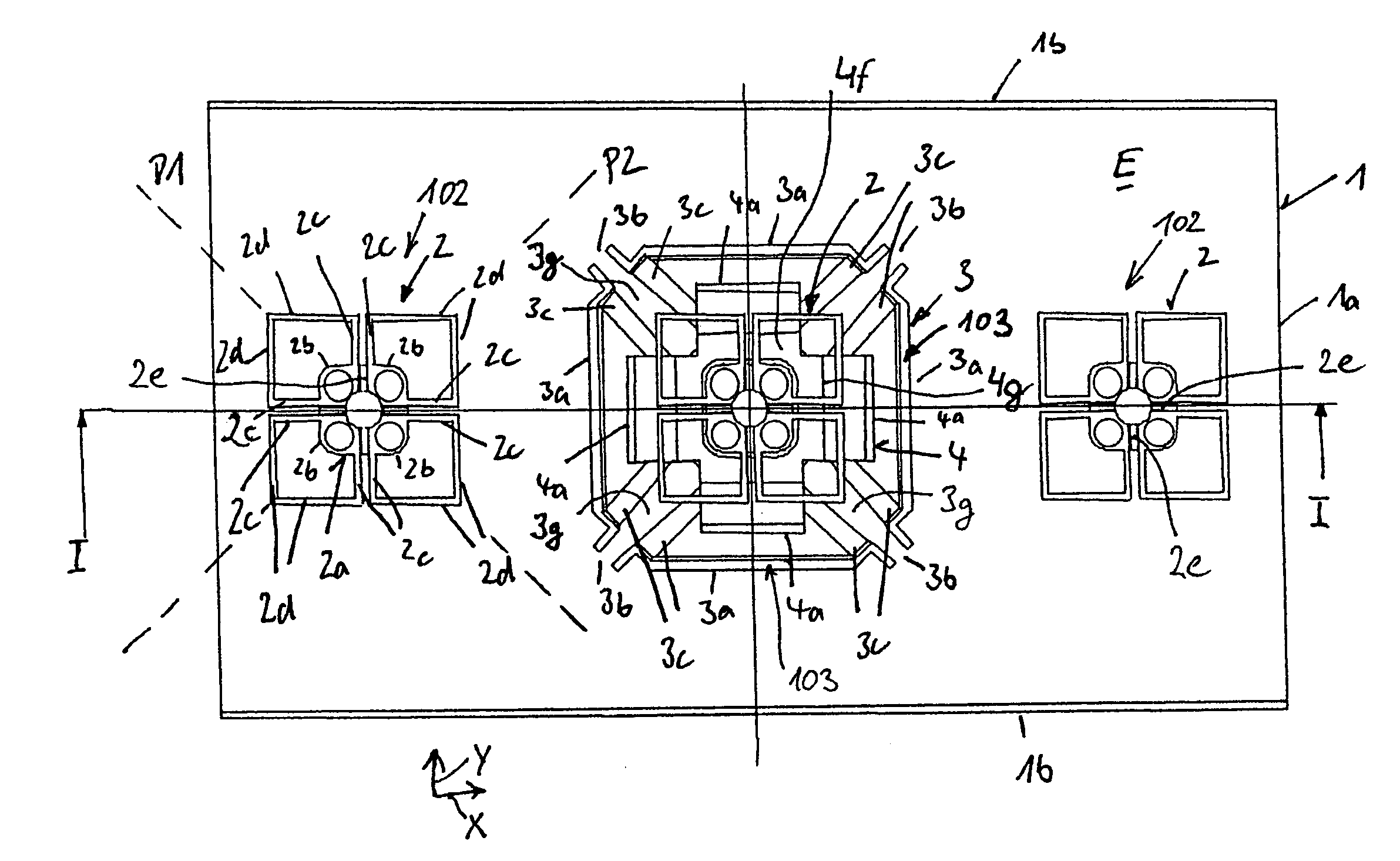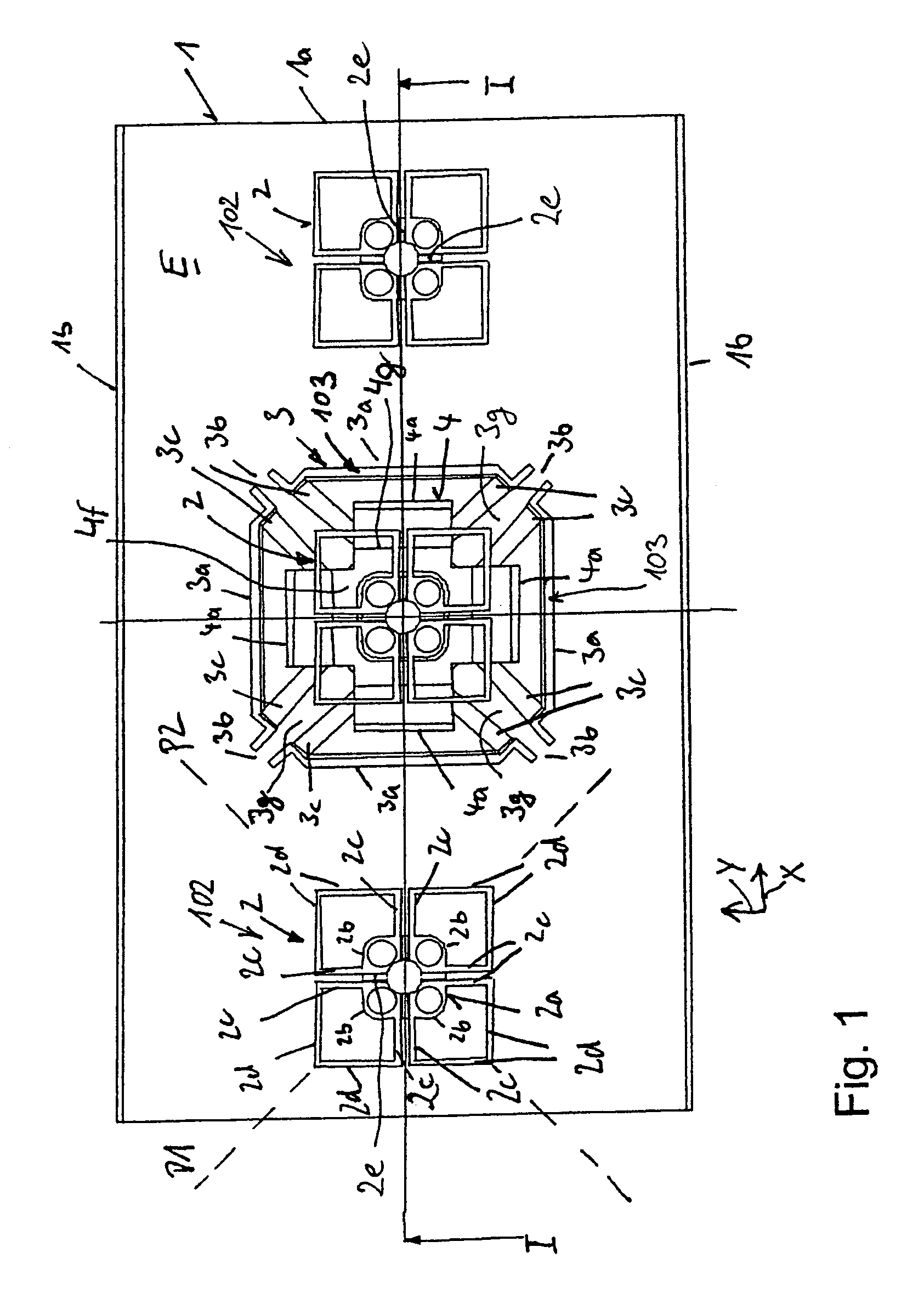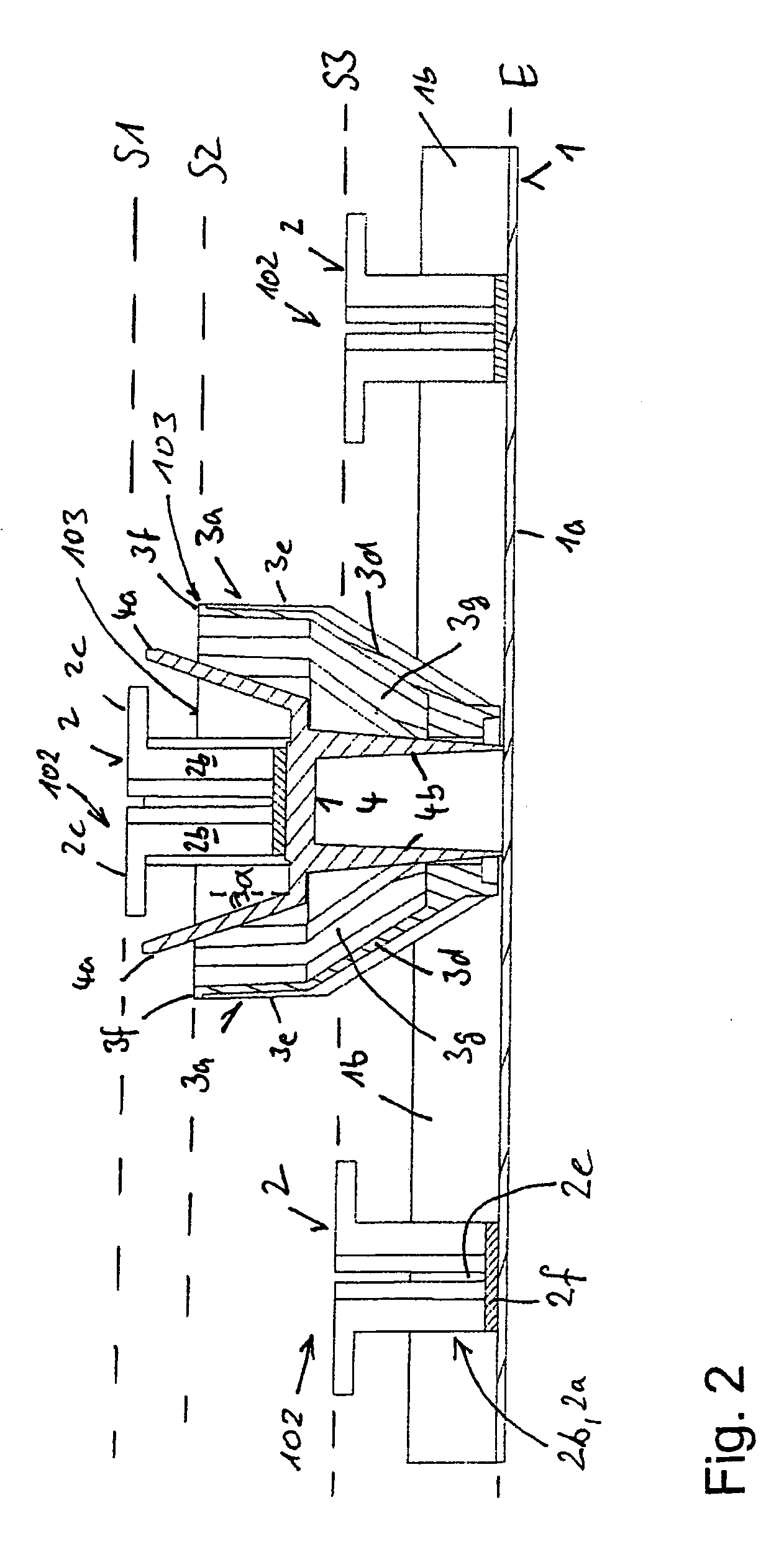Antenna, in particular a mobile radio antenna
a mobile radio antenna and antenna technology, applied in the field of antennas, can solve the problem of not being able to optimize the radiation characteristics of the upper and lower frequency bands simultaneously, and achieve the effect of improving radiation characteristics
- Summary
- Abstract
- Description
- Claims
- Application Information
AI Technical Summary
Benefits of technology
Problems solved by technology
Method used
Image
Examples
second embodiment
[0049]FIG. 4 shows a plan view of the antenna according to the invention. In the embodiment shown in FIG. 4, the same antenna elements 2 and 3 are used as in FIG. 1, and the antenna elements are also arranged in the same way as in the embodiment in FIG. 1, in a plan view. In contrast to the embodiment shown in FIG. 1, however, the left-hand and right-hand first antenna elements are also arranged on a platform, with this platform having a closed, essentially rectangular, platform surface 4c with a corresponding boundary 4d, which frames and surrounds the platform surface. The platform on which the central antenna element 2 is arranged also corresponds to the platform which is also used in the embodiment shown in FIG. 1.
[0050]FIG. 5 shows a section view along the line II—II in FIG. 4. This shows in particular that the left-hand and right-hand platforms are identical, and have a different shape to the central platform. The left-hand and right-hand platforms essentially form a tower wit...
third embodiment
[0052]FIG. 7 shows a plan view of the antenna according to the invention. The antenna shown in FIG. 7 differs from the antenna shown in FIG. 1 by the use of a different type of second antenna element. Otherwise, the embodiment shown in FIG. 7 corresponds to the embodiment shown in FIG. 1, so that it will not be described in detail.
[0053]In FIG. 7, a dipole square 3′ is used instead of a cup-shaped antenna element 3, and has four dipoles which are in the form of rods and each comprise two dipole halves 3a′. The individual dipoles in this case run at an angle of 45° to the side walls 1b of the reflector 1. This means that, analogously to the cup-shaped antenna element in FIG. 1, the dipole square transmits and receives with the +45° polarization P1 and the −45° polarization P2. The design of antenna elements in the form of dipole squares is well known from the prior art. By way of example, reference is made to the document DE 198 23 749 A1, with this reference including its entire dis...
PUM
 Login to View More
Login to View More Abstract
Description
Claims
Application Information
 Login to View More
Login to View More - R&D
- Intellectual Property
- Life Sciences
- Materials
- Tech Scout
- Unparalleled Data Quality
- Higher Quality Content
- 60% Fewer Hallucinations
Browse by: Latest US Patents, China's latest patents, Technical Efficacy Thesaurus, Application Domain, Technology Topic, Popular Technical Reports.
© 2025 PatSnap. All rights reserved.Legal|Privacy policy|Modern Slavery Act Transparency Statement|Sitemap|About US| Contact US: help@patsnap.com



